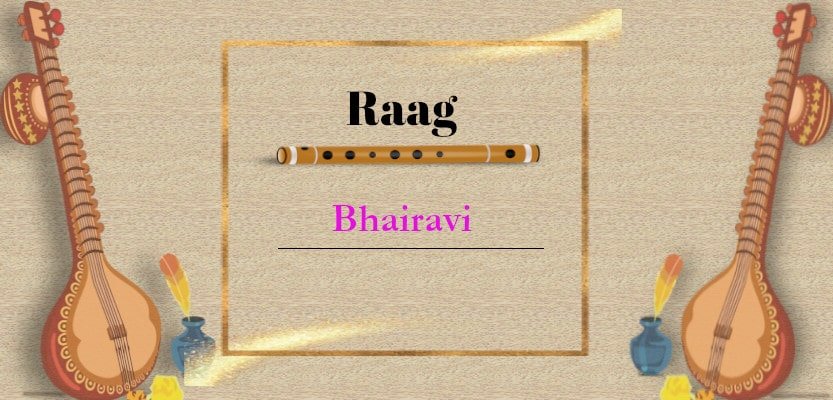Page Contents
ToggleBrief Description
Bhairavi raag is a Hindustani Classical heptatonic (Sampurna) Raag of Bhairavi Thaat. The word “Bhairavi” derives from one of the eight forms of the Devi, born in the burial grounds. Because of this, this raag embraced even in the mind of untutored Indian Rasika.
Almost all forms of Indian classical music, semi-classical music, and light music can be sung easily in this raag. Singers include all Komal and shudh swaras to beautify this melodious raag.
Although Bhairavi is a major raga, it stands apart from other ragas because the melodic combinations can include all the twelve notes with skill.
Anyone who claims to know or appreciate music cannot be unaware of this queen of melodies i.e. Raag Bhairavi.The soft (Komal) notes and their smooth rendering with gentle touches – Khatke, Jhatke, and Murkiyan simply mesmerises the audience. It creates a pleasant atmosphere full of love and also one feels so close to the Supreme. Its compositions include several Thumris, Bhajans, Ghazals, Songs, etc.
Raag Bhairavi is an early morning raag, but it is often performed as a concluding piece at the end of an evening of classical music concerts.
Also read this : How to do riyaz of raag at home effectively.
- Thaat : Bhairvi
- Jaati : Sampurna-Sampurna
- Vadi Swara : Ma
- Samvaadi Swara : Sa
- Samay ( Time ) : Early Morning
- Komal Swara (k): Re, Ga, Dha, Ni
Raag Structure : Aaroh , Avroh and Pakad
Bhairavi Raag Aalaap and Bandish
Aalap :
- Sa Re(k) Sa, Ga(k) Re(k) Re(k) ni(k) – Sa – Re(k) Ga(k) Re(k) Ga(k) Sa dha(k) ni(k) Sa |
- ni(k) Sa Ga(k) Ma Pa – – – Pa Dha(k) Pa Dha(k) Ni(k) – – Dha(k) ऽ ऽ Pa, Pa Dha(k) Ma Pa Ma Ga(k) Re(k) Re(k) Sa |
- ni(k) Sa Ga(k) Ma Pa Dha(k) Ma Pa, Dha Pa Ma Ga(k) Pa, Dha(k) Pa Ma Ga(k) Sa Re(k) Ga(k) Ma Re(k) Re(k) Sa |
- Ga(k) Ma Dha(k) Ni(k) SA RE(k) ऽ SA, GA(k) RE(k) SA, RE(k) SA Ni(k) Dha(k) Pa Ma Ga(k) Sa Re(k) Sa |




